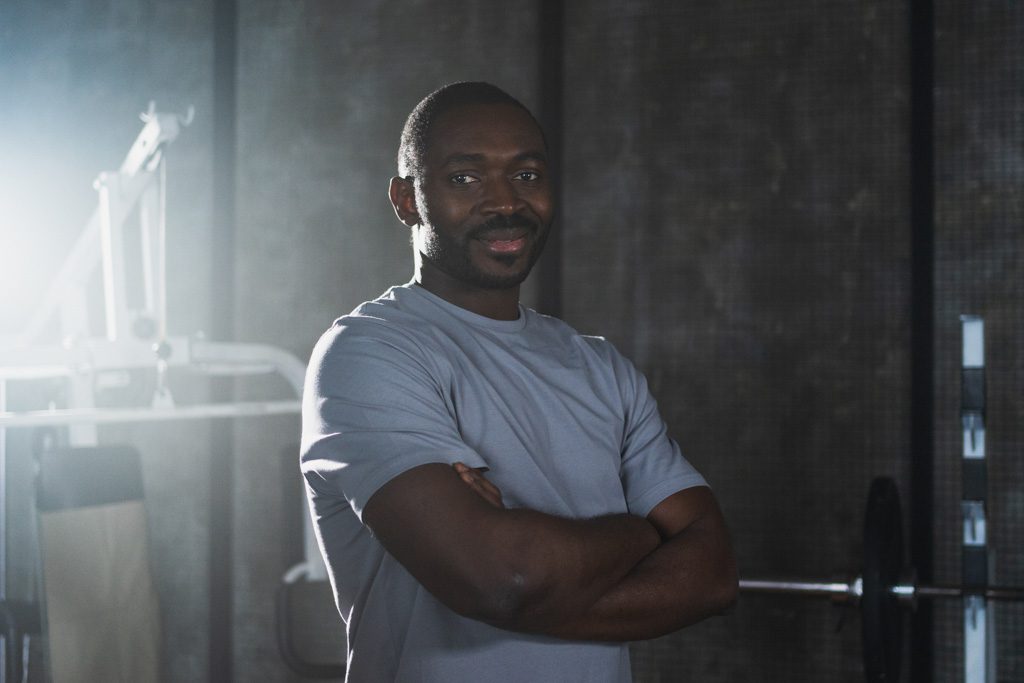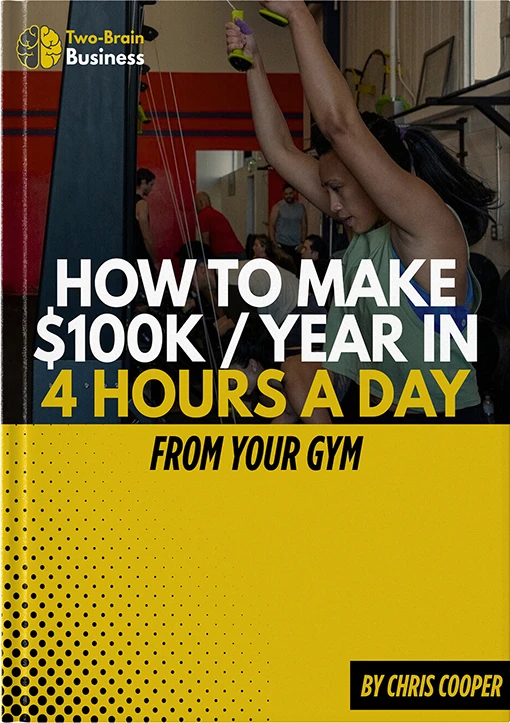Many gyms sign up with Two-Brain when they’re in trouble.
First we get them back to level, and then we help them build a model that will support growth.
The Two-Brain model is flexible. It works for any type of gym. Want to teach CrossFit? Great. What about kickboxing or bootcamp? No problem. Want to do it as a big-group facility? We’ve got you. One on one, small group, semi-private? Yep.
We start with the outcome you want from owning a gym—your Perfect Day—and we calculate what you need to earn per year. Then we work backward to build revenue models, and we address marketing, retention, sales, operations and staff training to make your dream come true. We even help you build a dashboard so you can track your progress.
But as Greg Glassman said in our recent interview, “If I can reverse it, then I can prevent it.”
That means adopting a Two-Brain model can save a failing gym. But it also means adopting that model before you’re in trouble makes your business more bulletproof when the market goes bad, and it will go bad from time to time.
The best part: Regardless of the current state of your business, you’ll will never lose hope if you’ve got a map and a guide.
Here’s why the model works:
1. It provides flexibility—When your group-class clients start to cancel because of job losses, rising gas prices or just fear, you can easily pivot to your other options and promote them. If you’re just running group training, for example, you’re at the mercy of every economic trend.
2. I helps you focus on your best clients—You’ll know your niche and can recruit clients who are more economically resilient. For example, high-value PT clients rarely bolt if stocks dip.
3. It creates a margin—Who gets killed by one big wave? The person who’s barely treading water before the wave hits. With a buffer of profit, you’ll have enough money to weather a rough patch.
Want proof that our model works in a storm?
During our last big crisis (COVID, in 2020 and 2021), Two-Brain gyms had 78 percent revenue retention, even in areas where other gyms had less than 50 percent revenue retention.
And this was over a two-year period. In the first three months of the pandemic, Two-Brain gyms had over 93 percent revenue retention while some gyms made no money at all.
This is because we make gyms resilient and antifragile.
Our job is not to “flood your gym with leads.” Aggressive and sometimes desperate tactics can create short-term revenue bumps, but they never, ever create long-term sustainability. So we don’t use one-hit wonders, bait and switches, and dangerous tactics that send gyms into death spirals—paid-in-full discounts provide an obvious example.
Our job is to build gyms that will last 30 years by mentoring gym owners to be great entrepreneurs. Over 30 years, economic challenges will always appear. Great entrepreneurs can ride them out and then capitalize on the back end. Weak entrepreneurs grow when the economy grows and die when the economy shrinks.
So Is Your Gym Bulletproof?
How do you know if your business needs help?
Sorry if these sting a little:
1. You still say, “We were doing well before COVID.” The pandemic ended three years ago. If you haven’t recovered, it’s because you don’t have a plan now (and probably didn’t have a plan beforehand). Two-Brain didn’t lose a single gym to lockdowns, and the average Two-Brain gym surged 8 percent in the three months after reopening.
2. You would lose over 10 percent of your clients if your prices went up 20 percent. In an economic downturn, many of your clients’ other expenses are up 20 percent or more. How long before they start cutting costs to pay for gas and food?
3. You haven’t built a clear marketing funnel and don’t know how to check a funnel for leaks.
4. You’re paying more to staff and rent than you’re paying to yourself (you have no buffer).
5. You routinely lose 10 percent of your revenue around Christmas (your clients don’t have economic resilience) or in summer (your clients have other priorities).
6. If you got a big, unexpected tax bill today, you’d blame your accountant (you don’t have vision or control of your money).
7. Over the last three months, you lost as many clients as you gained (your retention isn’t strong enough).
8. You’re not taking an income from the business (you’re a step away from putting money into your gym).
9. You blame your franchise or CrossFit HQ or “too much competition” or the government for your troubles.
Here’s the harsh reality: You started the business, and you took a very real risk. Now it’s up to you to build the business. When other people agree to work for you, they are depending on your CEO skills, not your coaching skills. And the clients who rely on your services might love your coaching, but they don’t get access to that if you run your business into the ground.
You must level up as a CEO.
Hope, Flashlights and Maps
More tough love: No one is coming to save you. If you’re struggling now, you’re not going to be able to “just work harder” or “figure it out” when times get bad.
But there is hope.
Others have been through hard times. None of us just “worked harder” or stumbled onto solutions. To navigate bad water, we found a mentor, connected with a community and got help.
In 2008, my gym was flailing. I had missed my last two paychecks and didn’t know where the rent was coming from. My clients were trying to “save money” because their mortgages and grocery bills were going up.
I survived only through mentorship from someone outside the fitness industry. He gave me a plan—and hope.
There were no real fitness business mentors then, so I used what I had learned to create a program gym owners can use now to build resilient, antifragile businesses that survive bad times and thrive in good times.
Nobody just figures it out on their own because we run out of hope before we run out of money, time or energy. Alone, we are likely to give up when things get really hard.
An economic downturn is like a long, dark tunnel; the only way out is through.
It sure helps to have someone with a flashlight and a map.
To get a look at a map for your unique business in 2025, book a call here.

